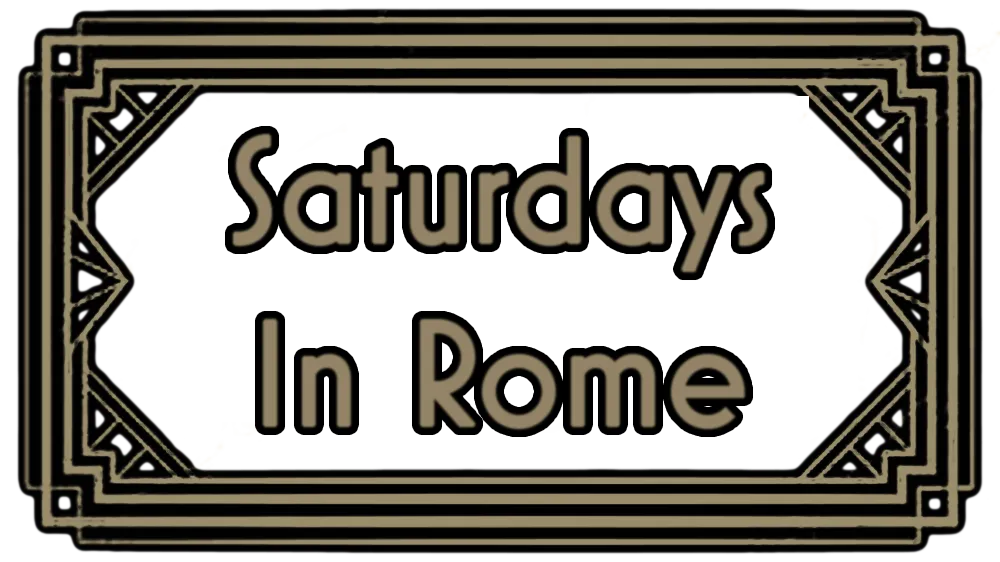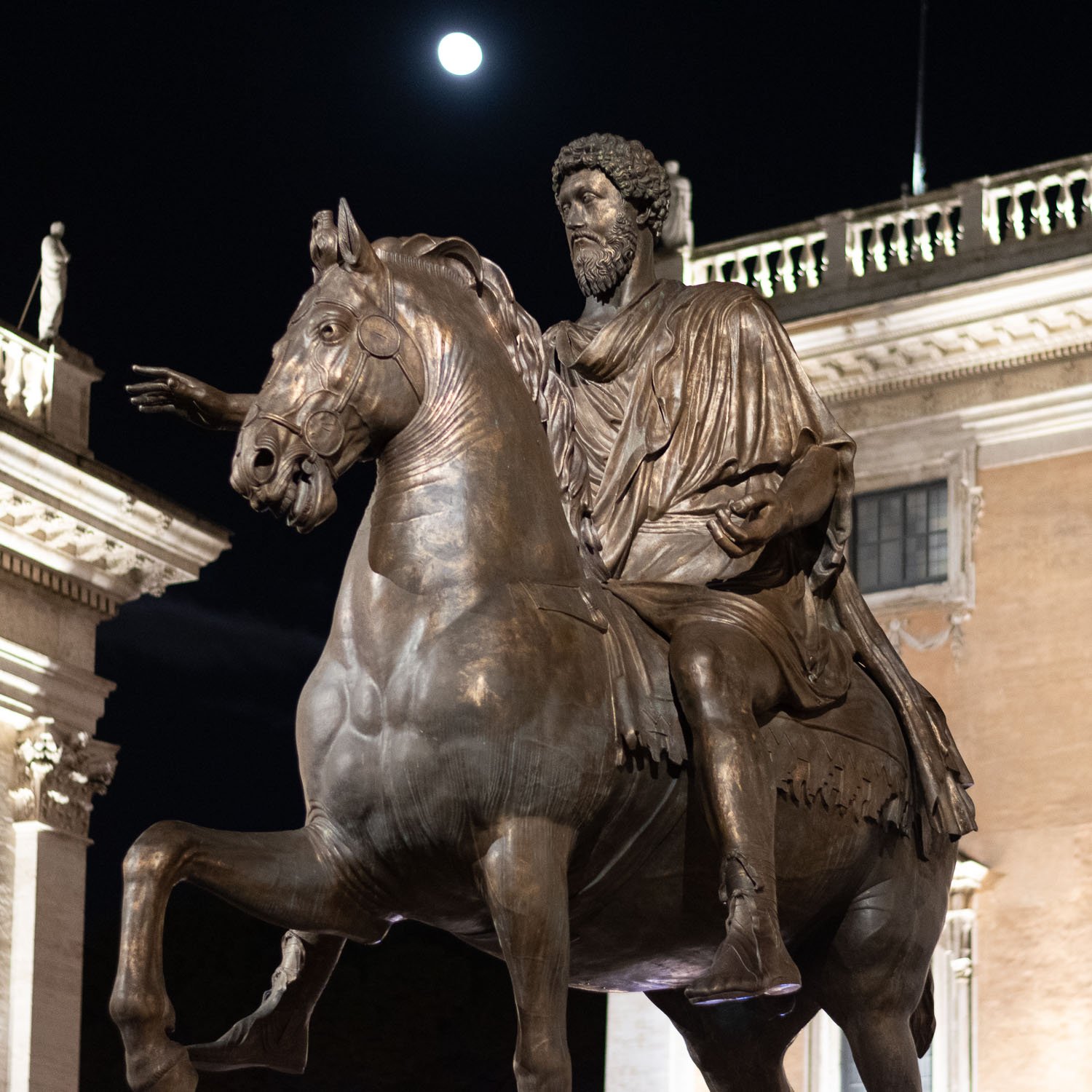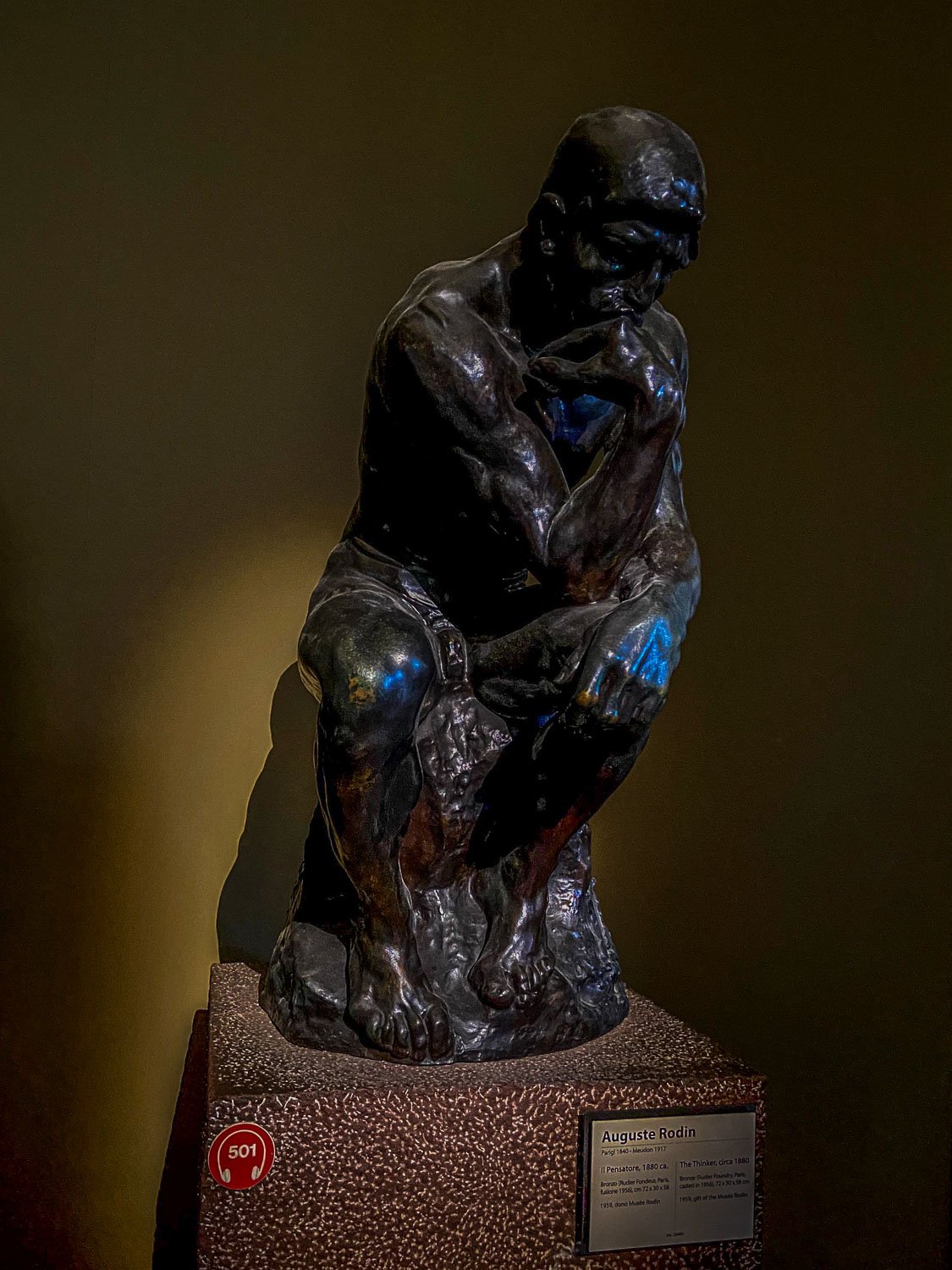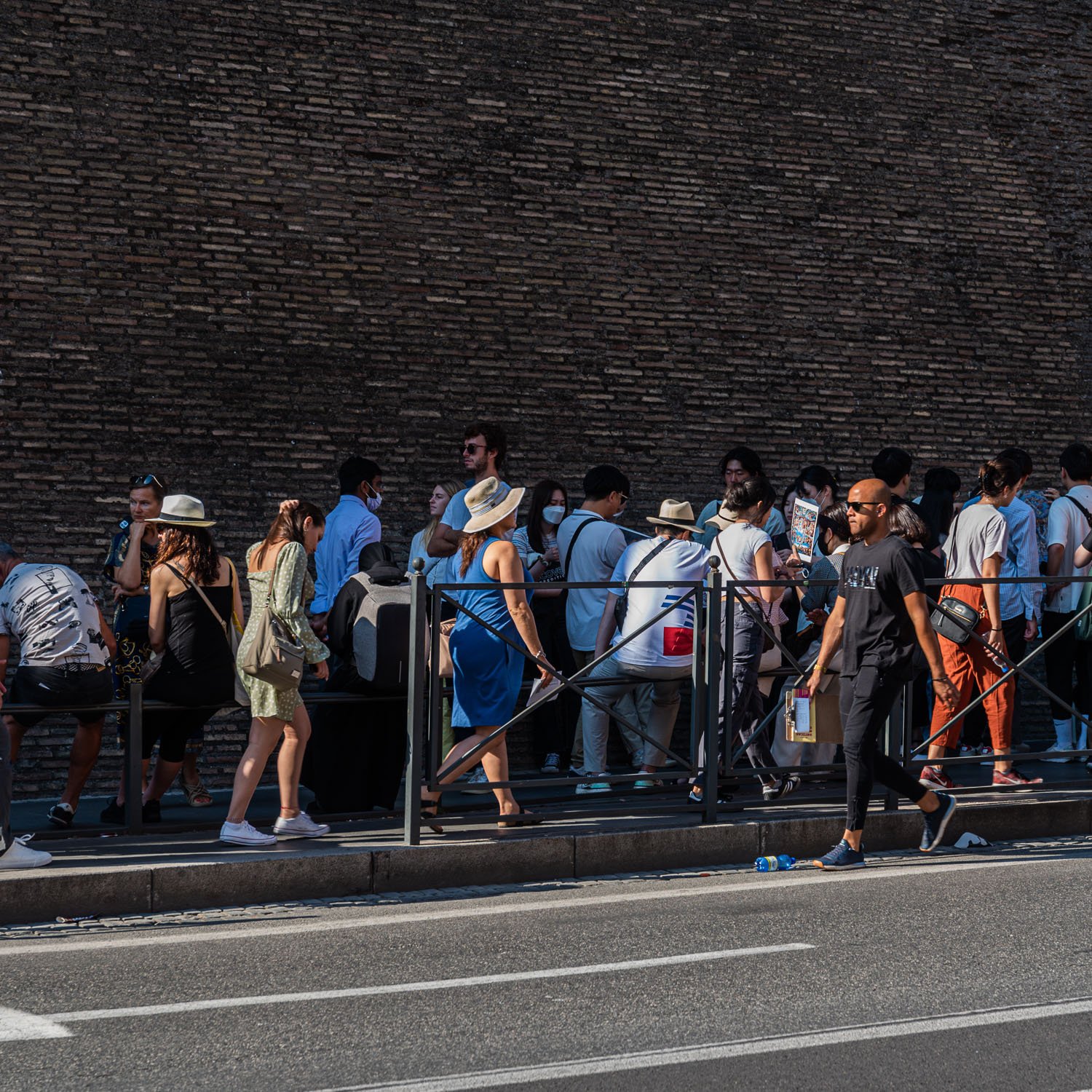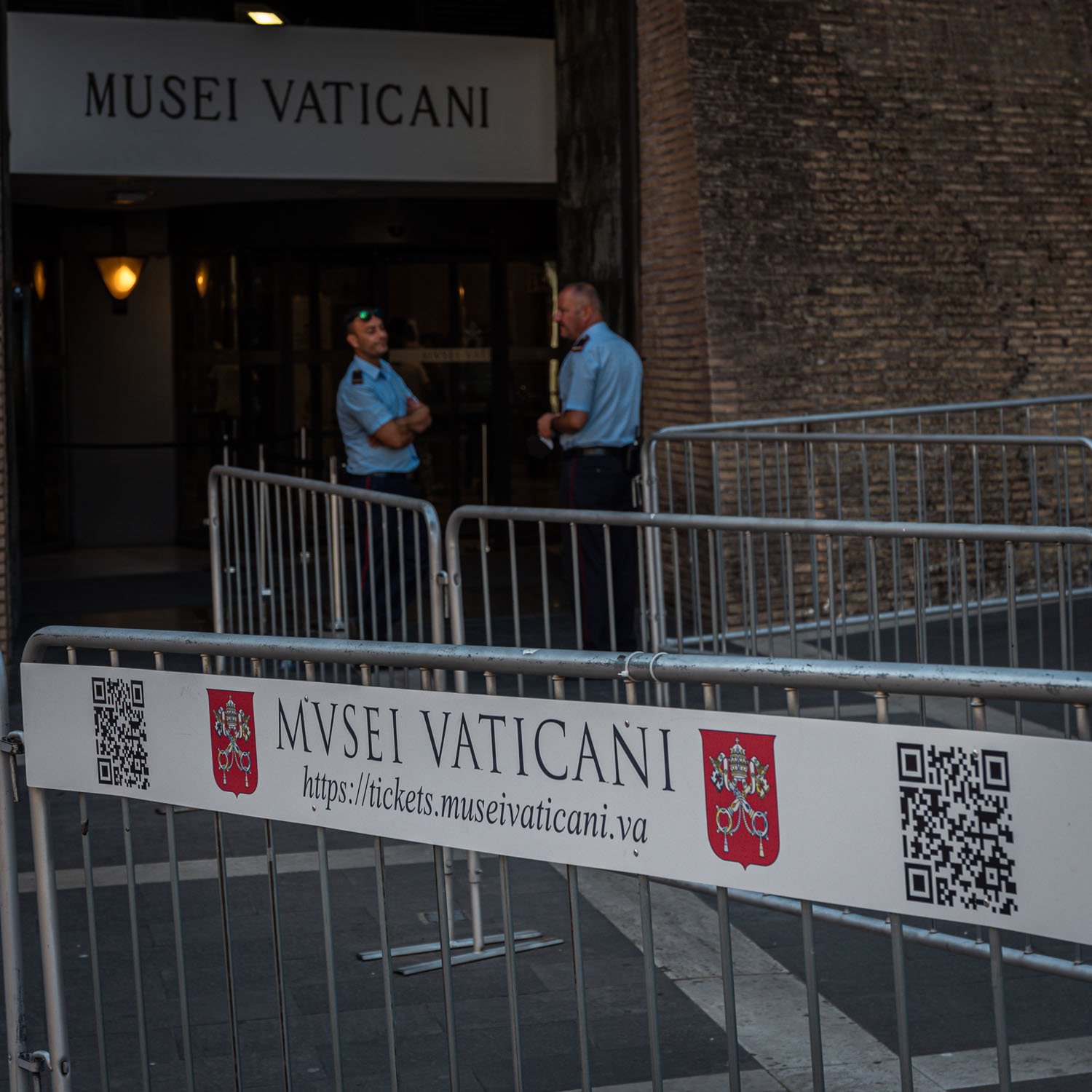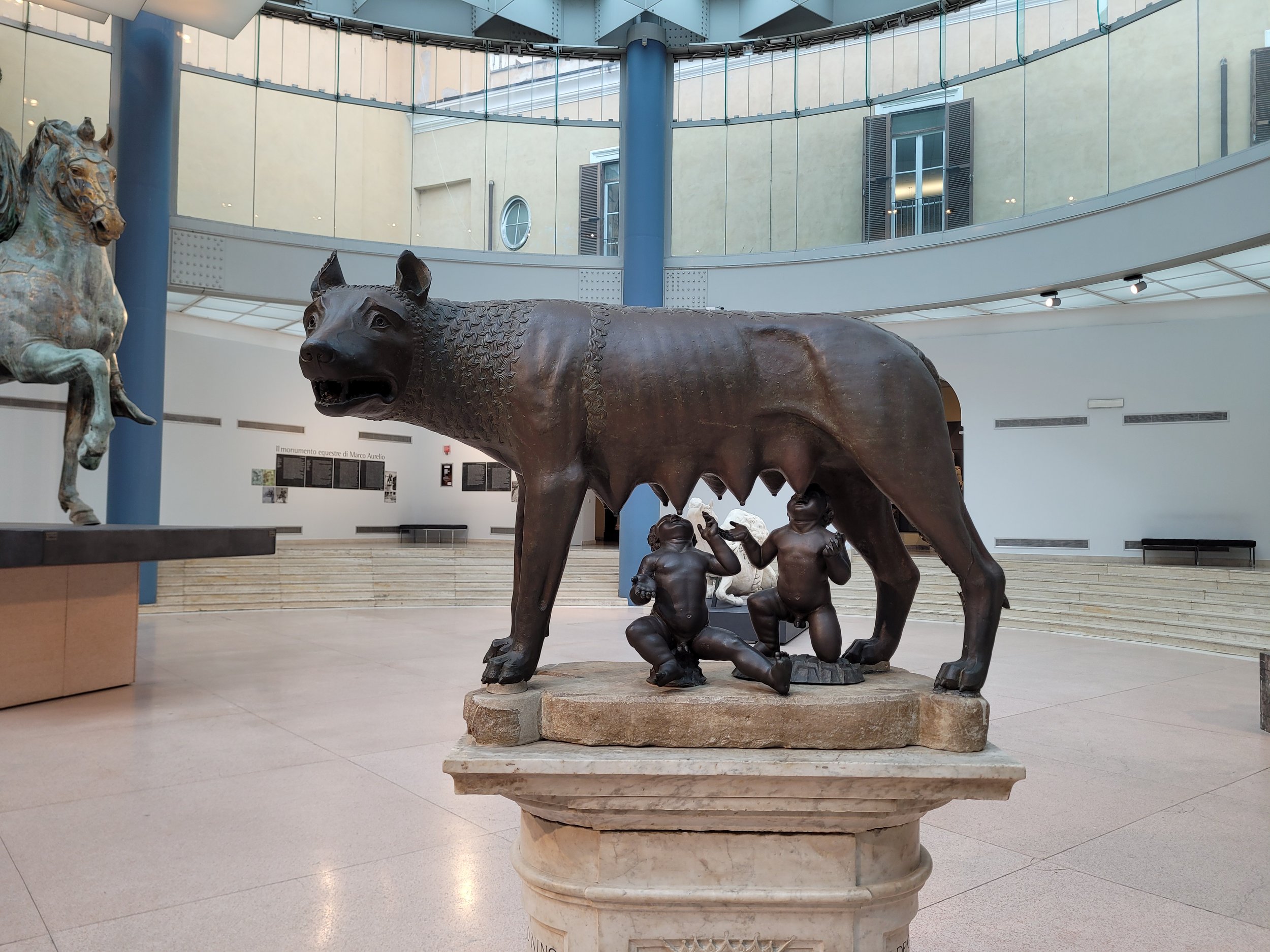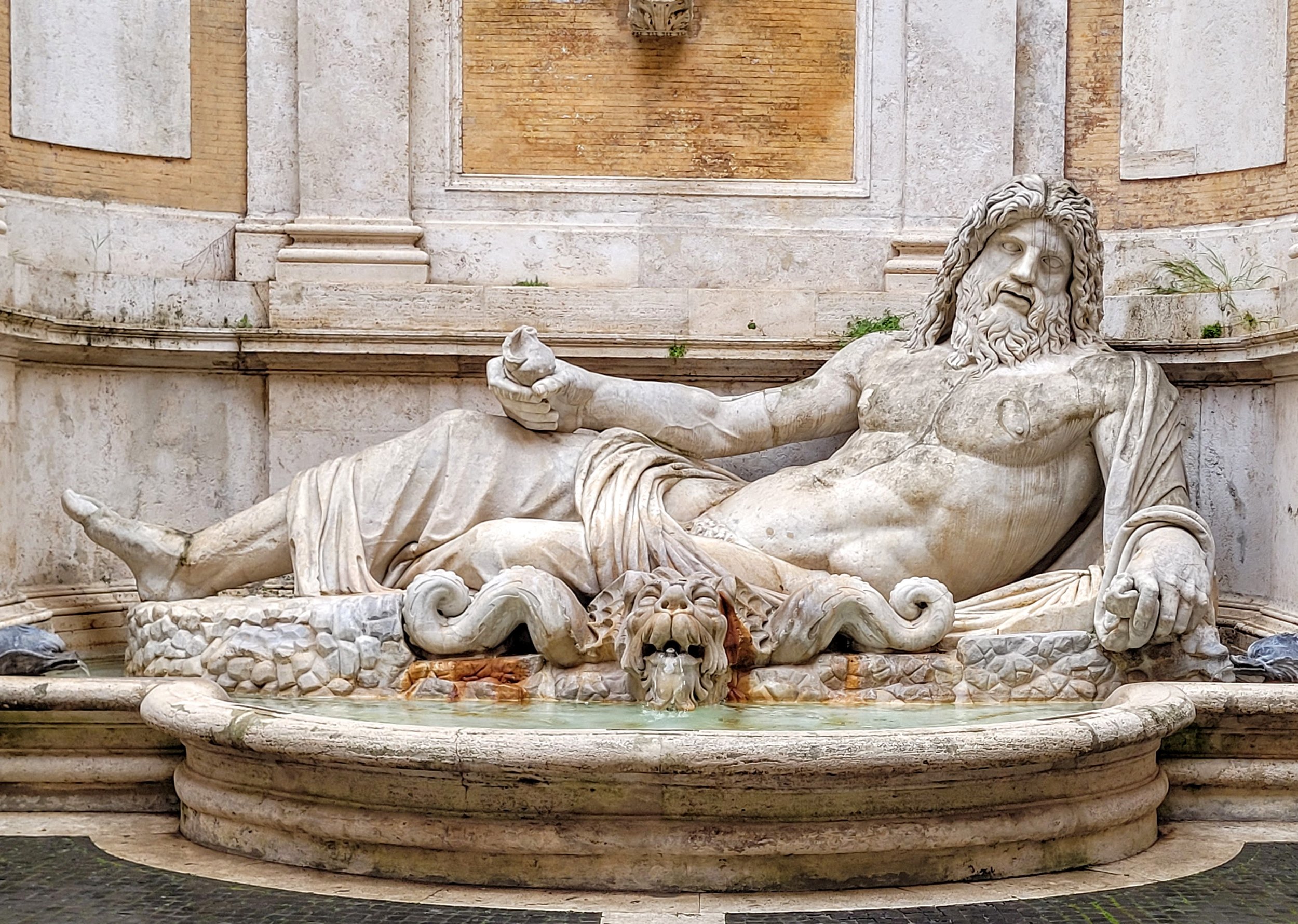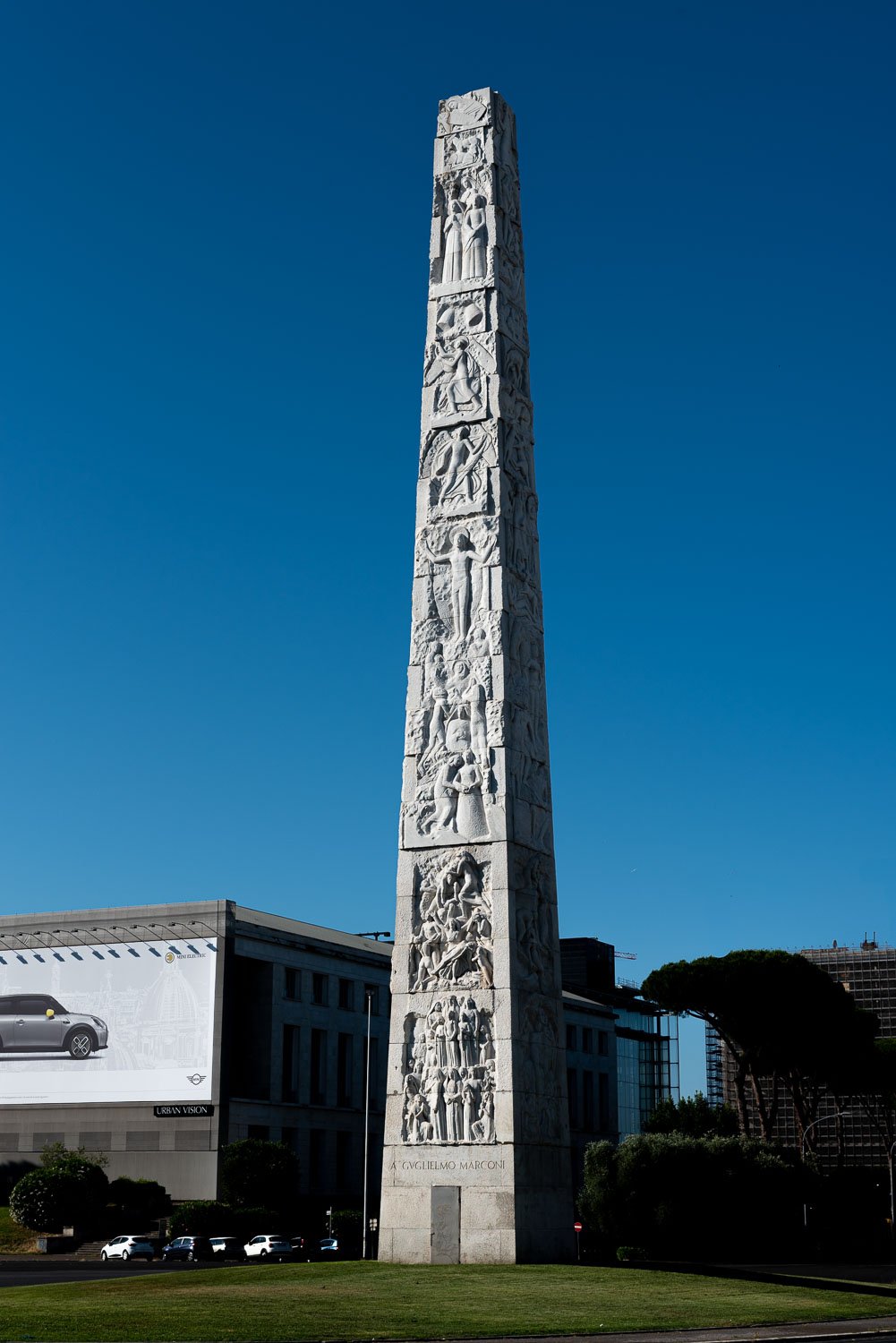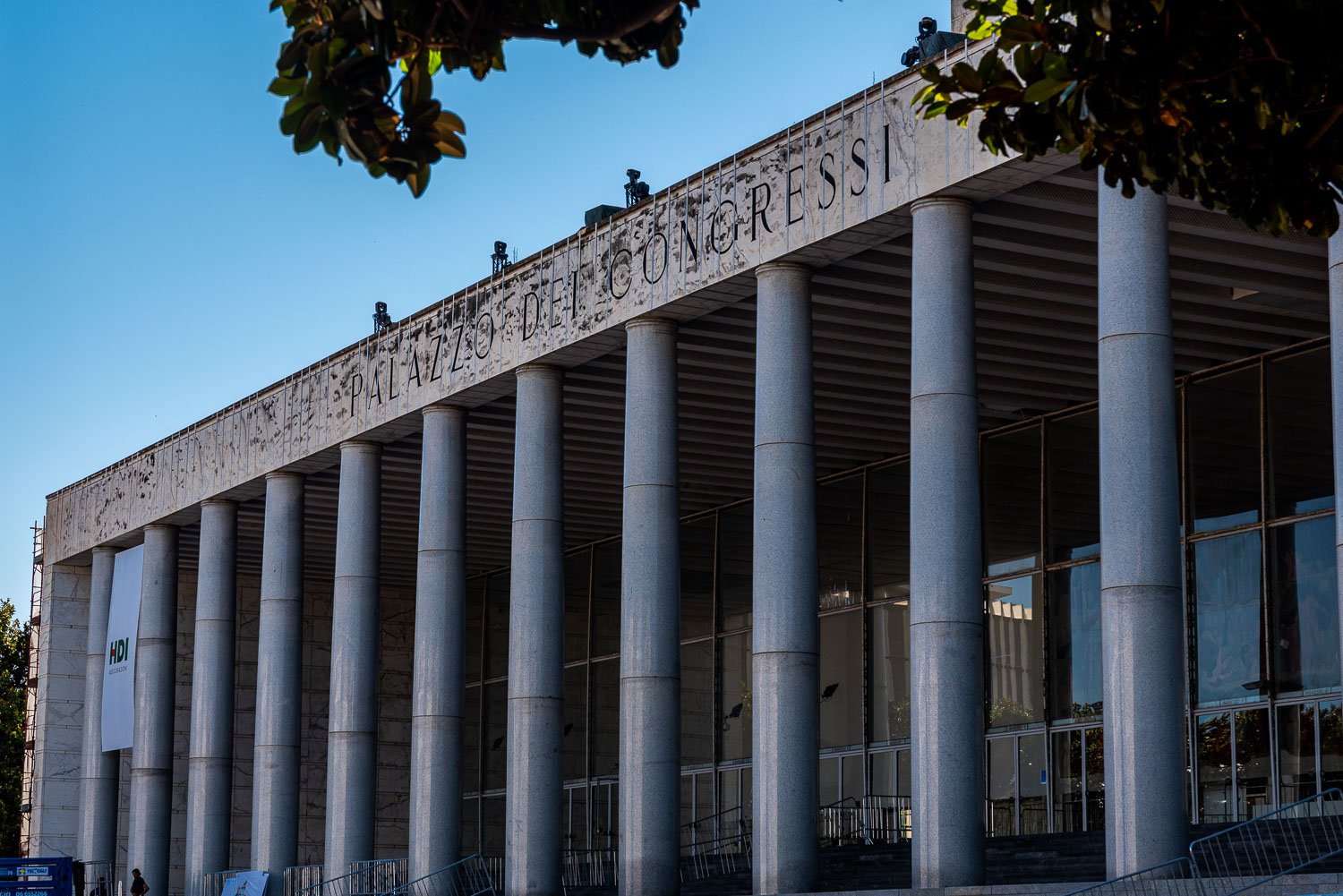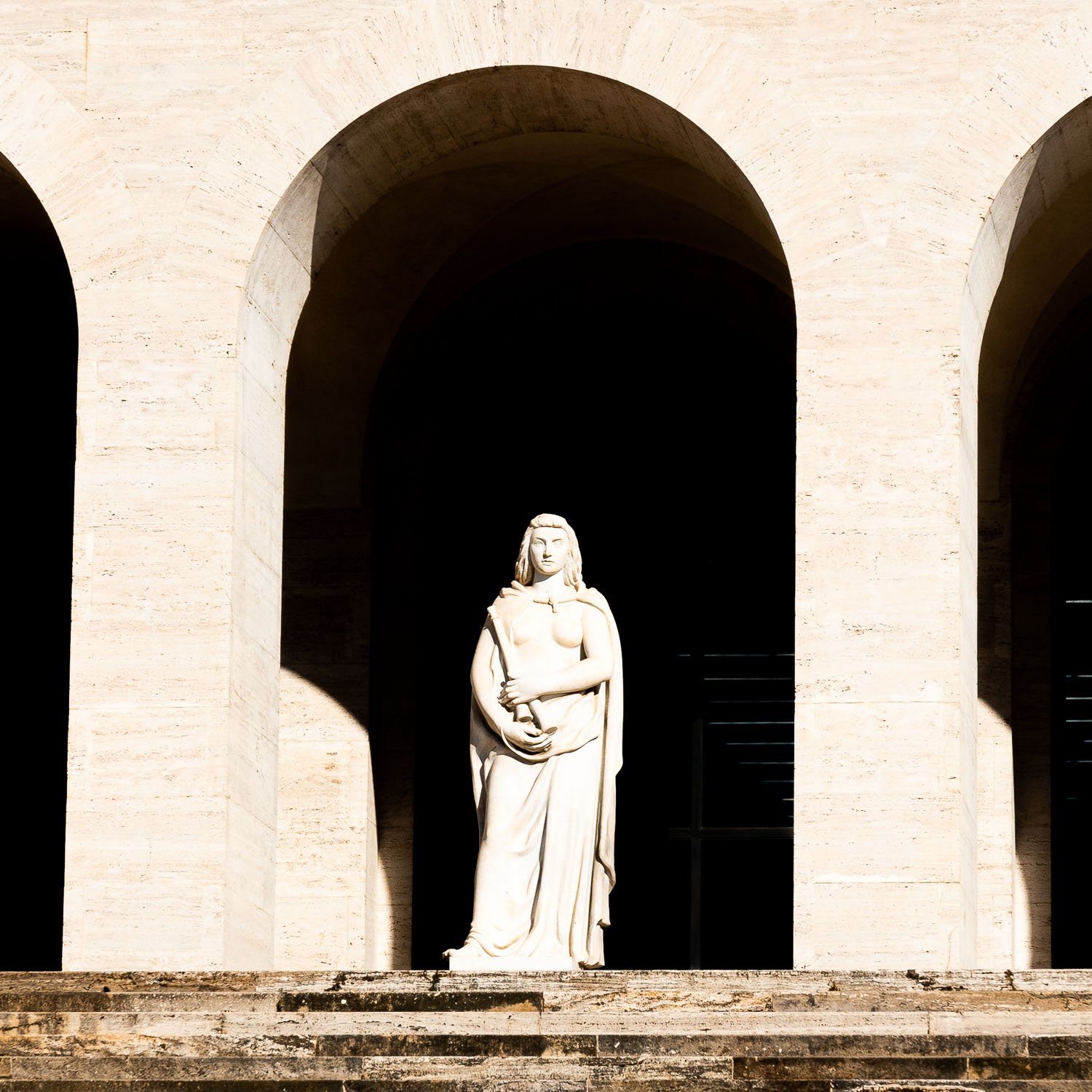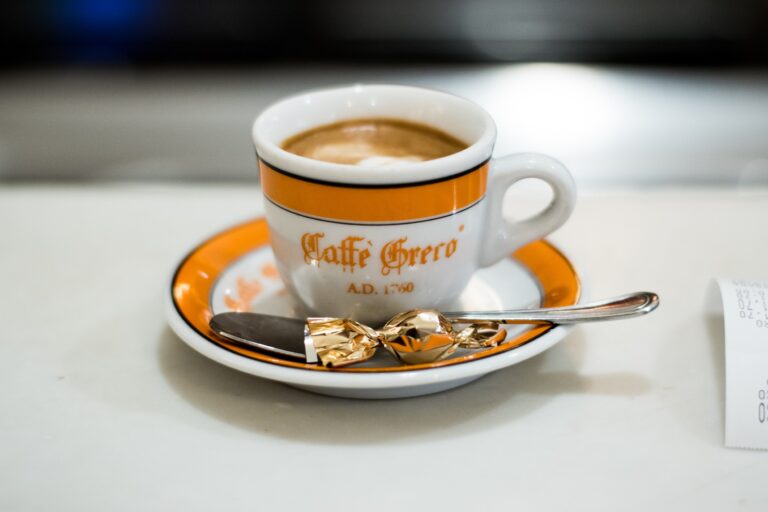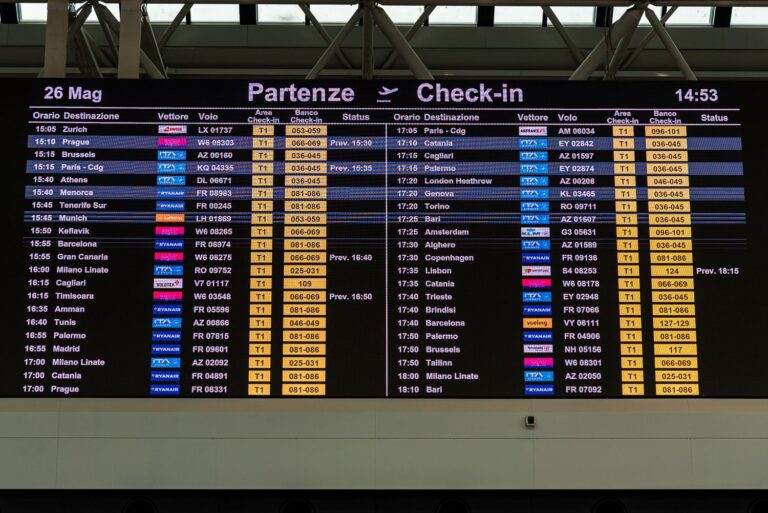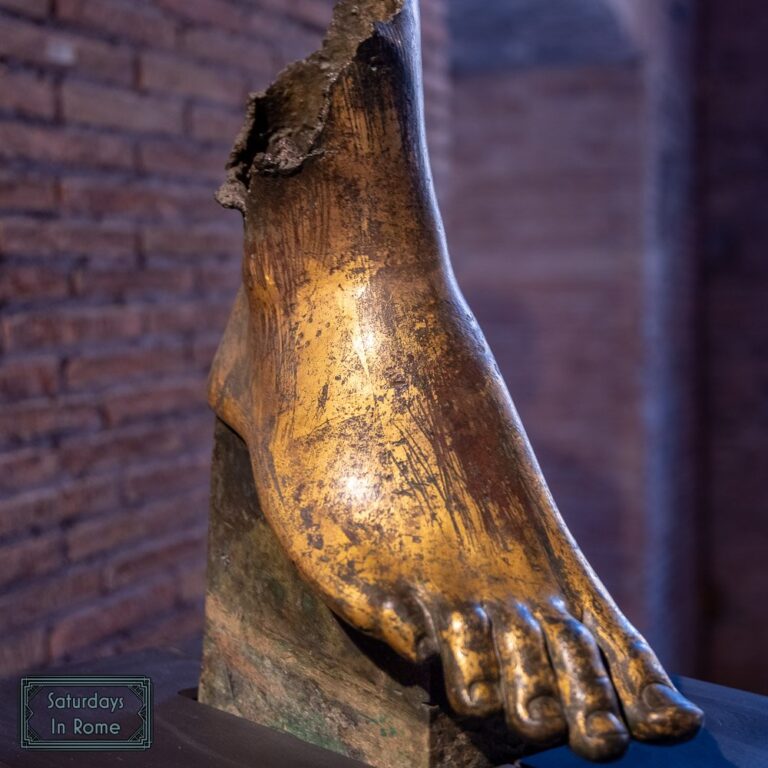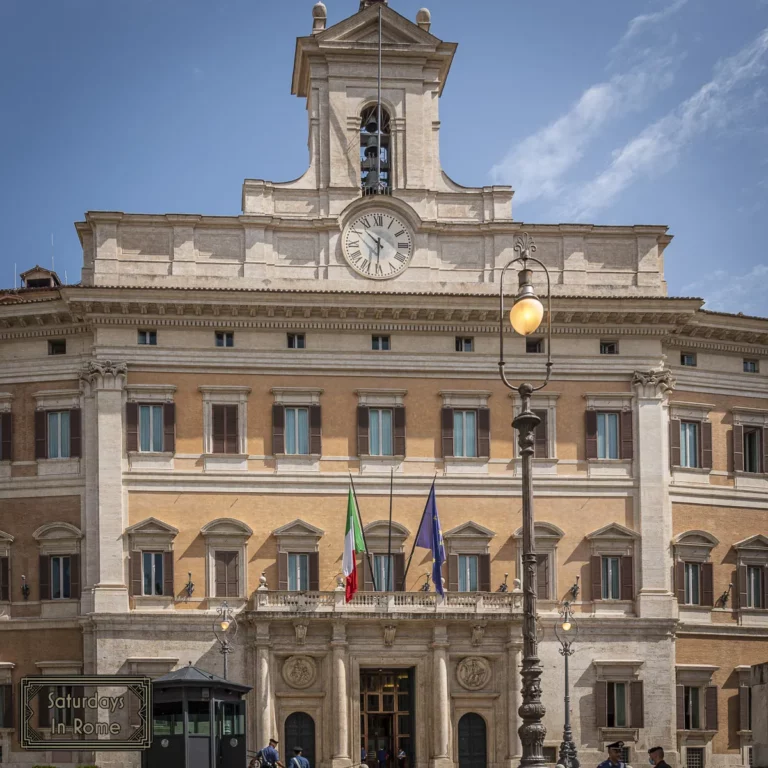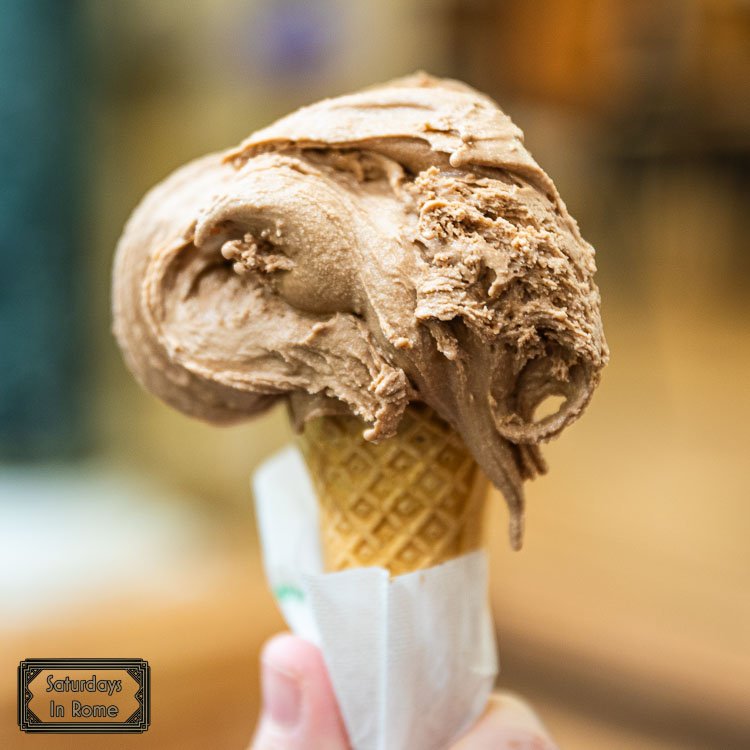Your Second Time In Rome Still Needs An Itinerary
A second time in Rome still needs an itinerary for the amazing things that remain to do during another 3 days in Italy and to make another visit memorable.
Replica Equestrian Statue of Marcus Aurelius
How Do I Plan My Second Time In Rome?
I have previously posted a suggested Rome travel itinerary for your first visit, but if you are planning your second trip to Rome, then this itinerary is for you. There are still a lot of beautiful historical sites, neighborhoods, shops and restaurants around Rome that you can still investigate, but it is easy to get overwhelmed. You could work with a tour company, but if you are like us and you like to plan your own adventure, you might consider using this as a framework that you can update as you see fit.
Need Help Planning?
- Cheap Flights: Find The Most Affordable Flights.
- Accommodations: From 1 to 5 Stars And More.
- Car Rentals: Affordable Travel Across Italy.
- Sightseeing Tours: Explore Some Amazing Tours.
- Buying An eSIM: Stay Connected In Italy.
This post includes affiliate links.
Is Three Days In Rome Enough?
Rome is a city that can take you a lifetime to fully consume, but that isn’t an option for most people. A second three day visit to Rome is a great opportunity to enjoy the city beyond the Colosseum and Trevi fountain.
This itinerary assumes that this is your second trip to Rome, Italy and that you will only be in Rome for three days, it assumes you aren’t on a pilgrimage so your focus isn’t solely on religious sites and lastly it assumes it isn’t too hot and you are able to walk around for the entire day. I know the summer months can be difficult for that, so if it is too hot, you should add in more water breaks.
My other assumption is that since I would have no way to know your starting point, i.e. which hotel, Airbnb, hostel, cruise ship, etc. you are staying in, I am assuming a starting point that is fairly central, like Piazza Venezia.
Second Time In Rome Pre-Day 1
- Make reservations for the Capitoline Museums highlights tour that you are interested in. Consider the length of time you will want to walk around the museum and select the appropriate tour.
- Determine if you want a more than 4 hour tour of the Vatican Museums and Sistine Chapel, or having a self-guided tour is more appropriate. If you want the guided tour, make reservations.
- Make reservations for the Roman Forum tour.
- Call to make Day 1 lunch reservations at Ristorante Rosso.
- Call to make Day 2 reservations at Taverna Trilussa in Trastevere for dinner.
- Call to make Day 3 reservations for dinner at ReBasilico.
Second Time In Rome Day 1
- Start with a cornetto and an espresso after walking down to a bar near your tour of the Roman Forum.
- After you finish at the forum, the Capitoline Museums will be a nice air conditioned escape from the heat.
- After the museum, walk toward via Petrocelli, continue on and pass Ancient Circus Maximus and stop for your lunch at Ristorante Rosso.
- After lunch, work it off by walking along Ancient Circus Maximus then up to the Giardino degli Aranci (Orange Garden) on Aventine Hill. Enjoy the tranquility.
- If the line isn’t too long, walk a little further to Buco della serratura dell’Ordine di Malta (The Keyhole) and enjoy the special view.
- Continue in the same direction along Via di Porta Lavernale and it will lead you towards Testaccio Market for a casual dinner.
- After dinner, be sure to stop into Pasticceria Barberini for a dessert and a coffee. Now you can head back to your hotel to rest up for a big Day 2.
Second Time In Rome Day 2
- You can try a different pastry, but make sure to start your day with another espresso (or cappuccino) and jump on the #64 bus or the Metro and head towards the Vatican Museums.
- Depending on how long your tour was, you are going to need some food, so stop by the convenient Cresci Roma for lunch.
- Walk off lunch by going to Castel Sant’Angelo and take a tour or just enjoy it from the outside because you have some climbing coming up.
- Walk along the Passeggiata del Gianicolo and head towards Fontana dell’acqua Paola and the fantastic views of the city. Enjoy more views from the Belvedere del Gianicolo.
- After a long afternoon of climbing, now head to Taverna Trilussa for dinner. After dinner, head back and get some rest. You deserve it!
Second Time In Rome Day 3
- Your last day in Rome and you rested up, so head to the Scala Sancta to climb up the holy stairs on your knees. Right next door is Basilica di San Giovanni in Laterano, so stop in for a quick tour. The other important church in the area is either a nice walk along via Merulana, or you can jump on the #714 bus and head to Basilica Papale di Santa Maria Maggiore.
- Head towards Termini Station and enjoy lunch at Er Buchetto, and I recommend the Porchetta sandwich with an inexpensive cup of wine.
- When lunch is done, grab the #714 bus or the subway from Termini and head towards the EUR Rome district. There you can walk about and enjoy the very unique architecture. If you keep heading south, you can and should also enjoy the Park at Lago dell’EUR.
- After you have reached your limit for nature, take a bus or subway back to Termini and go to ReBasilico for dinner.
- After dinner, stop by Lambiase Antonio Laboratorio Pasticceria for dessert and your night is done.
That was another full three days, but if you missed anything you should plan on adding that to your itinerary for your third trip to Rome, Italy . Now is the time to relax and reflect on all the great sites you saw, all the delicious food you ate and how great Rome is.
Some Of The Second Time In Rome Sites Mentioned:
The Vatican Museum
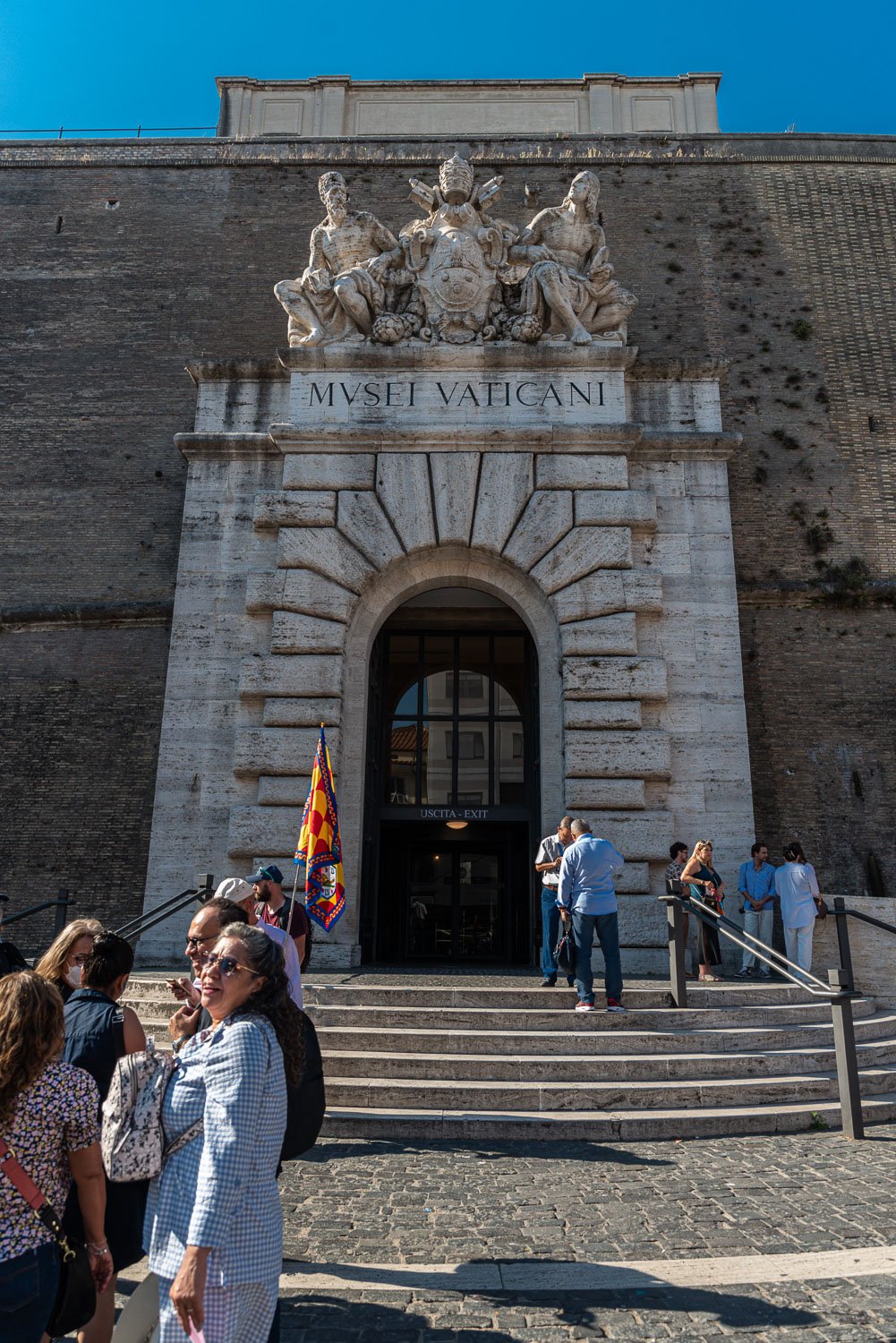
The Long Lines Lead Here
The Vatican Museums (Musei Vaticani) are the public museums of Vatican City. They display works from the huge collection amassed by the Catholic Church and the Papacy throughout the centuries.
The museums contain a huge collection of classical sculptures, tapestries and paintings by Renaissance artists like Raphael, Caravaggio, Michelangelo, Bernini, and da Vinci. The museums also have a collection of modern religious art, with works of artists like Van Gogh, Gauguin, Salvador Dalí, and Pablo Picasso.
Visiting the Vatican Museums is a unique experience that must be experienced at least once in your life. The visit is a long and interesting trip that will carry you through more than twenty centuries of history and art. The Sistine Chapel, the rooms of Raphael and the art gallery (Pinacoteca) are only a small part of the larger collections.
What To See In The Vatican Museums
The Vatican Museums are enormous and can take hours to fully digest. Because this is something you want to get right the first time, consider these to be must-see.
The Thinker was Cast Multiple Times
Bramante Staircase (Scala Del Bramante) – This staircase was originally built in 1505 and was in a double-helix design. It was designed to allow people and pack animals to ascend and descend without interruption. The modern staircase is also a double-helix and was built in 1932. This is a must see not only for its beauty, but it is very popular on social media, so you need to take a snap as well!
Raphael’s Rooms (Stanze di Raphaello) – These rooms are on the way to the Sistine Chapel and easy to miss, so keep an eye out for them as you approach the end of the museum. You will need to turn away from the Sistine Chapel, which feels unnatural on the best of days. There is a lot of great Raphael work in these rooms, but probably the most well-known is the “School of Athens”.
Sistine Chapel – Even if you skip everything else in these museums, the Sistine Chapel should not be missed. Michelangelo, one of the most famous Renaissance artists in the world, dedicated almost ten years of his life to the paintings that cover the ceiling and the wall behind the altar of the Sistine Chapel. The frescoes on the ceiling, collectively known as the Sistine Ceiling, were painted by Michelangelo in the years from 1508 to 1512. They depict incidents and personages from the Old Testament. The Last Judgment fresco on the west wall was painted by Michelangelo from 1534 to 1541. It is my favorite part of the entire museum and I recently heard a funny story if it is true. The colors on the ceiling are beautiful, but not nearly as bold as the colors on the Last Judgment fresco. The reason for this, I heard, was the paint on the ceilings were paid for by Michelangelo, and so he used the cheapest paint available. The paint for Last Judgment was paid for by the church, so he used the most expensive paint available, thus the bold colors. Kinda funny if it’s true.
The Sistine Chapel’s Recent History
There has been some recent history with the Sistine Chapel that I find interesting because it isn’t so well known and is worthy of discussion. Recently, Jason Momoa was in Rome filming the 10th installment of The Fast and The Furious. He caused a bit of an uproar online when he posted pictures from his visit to the Sistine Chapel. He quickly apologized for any disrespect and moved on, so good for him.
Lines, Lines Everywhere – Buy Tickets Online
However, this got me thinking about the outrage expressed. It’s true that visitors are typically forbidden from taking photos or videos in the chapel. There were complaints about his disrespect for such a holy place and outrage that he had offended Catholics. There are a couple of reasons why I think the whole storm was manufactured online outrage and not a real concern:
- First, people think the rule about not photos or videos is in place to protect the art, but it’s actually not. The strict ban was actually enforced because the Nippon Television Network Corporation of Japan owned the copyright on the interior. It was a deal that was necessary when the company paid $4.2 million for restoration work back in the 1980s.
- In 2014, The Vatican rented out the Sistine Chapel for a corporate event, marking the first time in history it has done so. A group of 40 people, on a tour of Rome arranged by automaker Porsche, paid around $6k each for the tour and the privilege to have a “magnificent concert in the stylish setting of the Sistine Chapel arranged exclusively for the participants,” according to Porsche’s website.
The Vatican insisted that it did not actually rent out the chapel and the funds raised by not renting it will go directly to charities of the Pope’s choosing. Given that the Church itself is a charity, by US standards, the Pope will have a lot from which to choose.
Hours
Buying Ahead of Time Will Save You Time
The opening hours from Monday to Saturday are from 9:00am to 6:00pm, with no entry after 4:00pm. During the tourist season, from April through October, the museums stay open until 10:30pm on Fridays and Saturdays.
On every last Sunday of the month, assuming it isn’t a holiday, there is free entry from 9:00am until 2:00pm.
In addition to most Sundays, the museums are closed on the following holidays in 2022:
- January 1st and 6th
- February 11th
- March 19th
- April 18th
- June 29th
- August 15th
- November 1st
- December 8th and 26th
Getting Tickets
Full entry to the Vatican Museums costs 17€, but there are a lot of discounts available for children, Pilgrims and students (secular and religious). There is free entry available:
- On the last Sunday of every month without a holiday
- Children under 6 y/o
- Museum Directors
- Disabled visitors with a certified invalidity of more than 74% (from the Vatican Museum site)
- Card holders from the International Council of Museums
- University teachers in Archaeology, Art History, Architecture and Ethnology.
The Vatican Museums Recommendations
First and foremost, buy your tickets ahead of time as the lines during the season can be incredible. Also, plan ahead of time how committed you are to seeing the entirety of the museums. This is a very big place and a guided tour can last more than 4 hours. If you want to see it all, hire a guide and wear comfortable shoes. If you only want to see the highlights, plan what is important to you and breeze quickly through the rest. Make sure to leave some time and energy to enjoy the Sistine Chapel. It is definitely worth the price of admission, but sadly you can not take any pictures.
The Capitoline Museums
Despite being the lowest and the smallest of the seven hills of Rome, the Capitoline (Campidoglio) is perhaps the most linked to the historical events of the city. Once the site of an ancient village, the Capitoline was the place chosen for the construction of numerous temples dedicated to Roman gods and the hub of political and religious activities in the city.
Legend has it that at the time of the founding of Rome, Capitoline hill was conquered by the Sabines. The young woman who betrayed the city would open the city gates to enemies, in exchange for rings and gold bracelets that the invaders wore on their left arm. The young woman was in turn betrayed by the Sabines themselves who, once inside, threw their shields at her, killing her.
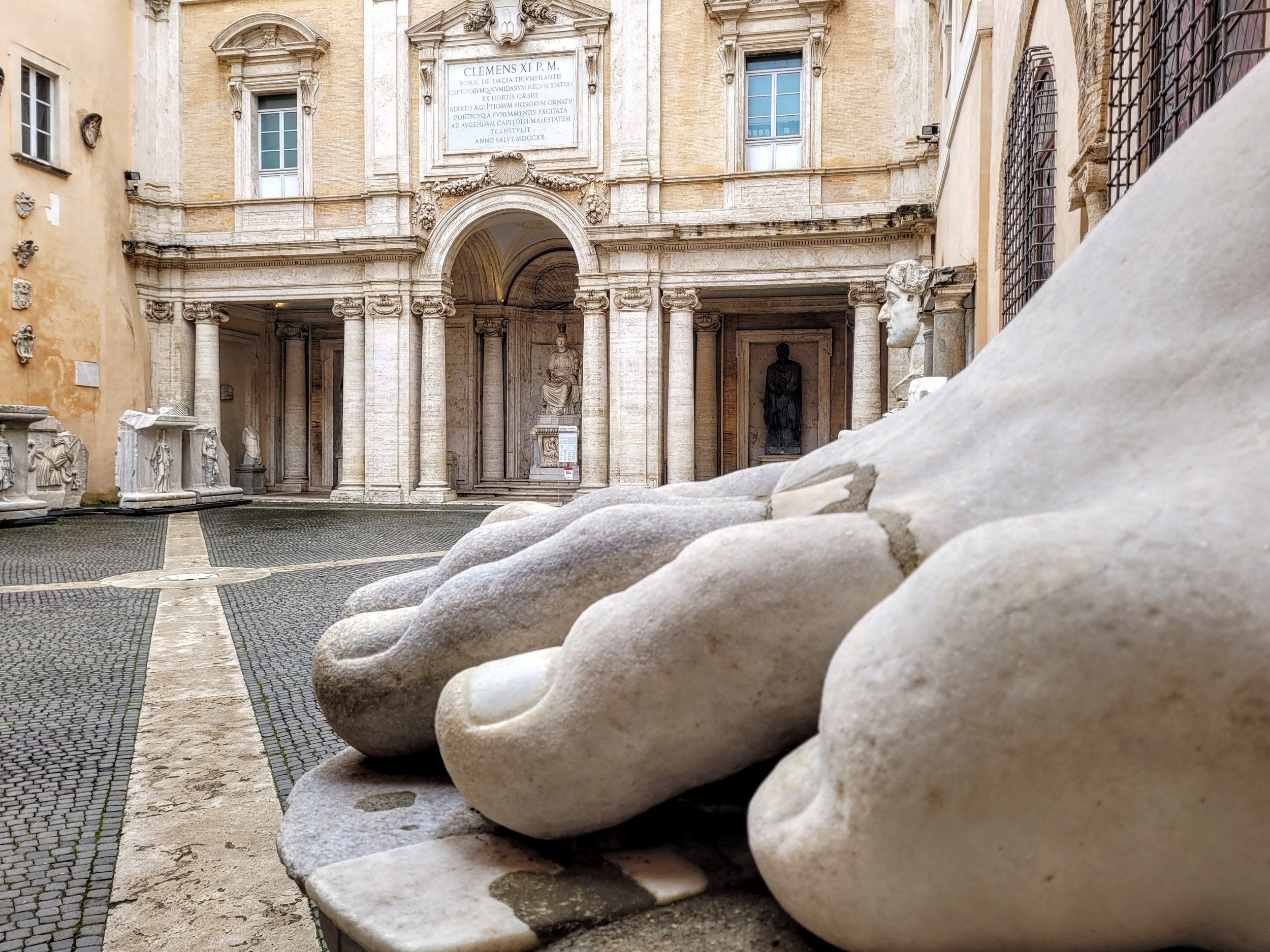
Perspective!
With obelisks, temples, statues and even a pyramid from the 1st century B.C., ancient Rome was experiencing a real “Egyptomania”, following the conquest of the territory by Julius Caesar and Augustus. Two magnificent basalt lions from the temple dedicated to the gods Isis and Serapis were initially placed at the entrance of the church of Santo Stefani in Rome. In 1587, when the Acqua Felice was brought to the Capitoline Hill, the lions were transformed into fountains, and two travertine chalices were placed in front. During special occasions or solemn feasts, instead of water, white and red wine from the Castelli Romani flowed from the mouths of the two feline sculptors to the great joy of the Roman people.
The History Of The Capitoline Museums
The origins of the Capitoline Museums are traced back to 1471 and they can be considered the first museums in history when Pope Sixtus IV della Rovere gave the Roman people a group of bronze statues of great symbolic value, the She-wolf, the Spinario, the Camillus and the colossal head of Constantine. The collections in the museums have a close link with the city of Rome, from where most of the works come.
The statues were initially placed outside and in the courtyard of the Palazzo dei Conservatori but the collection rapidly grew by subsequent acquisitions from urban excavations closely connected with the history of ancient Rome. The choice of location was not made without a lot of consideration. The Capitoline Hill was chosen, which housed the center of the administrative and religious life of Ancient Rome and which was also the seat of the city’s civil magistrates since the Middle Ages.
Important Artwork
She-Wolf with Romulus and Remus
- She-Wolf (a.k.a. Lupa Capitolina) – This is a bronze sculpture of unknown date kept in the Capitoline Museums. The twins below the wolf, representing Romulus and Remus, were added in the 15th century. It is traditionally considered Etruscan and it is believed that it was cast in the lower Tiber valley and that it has been in Rome since ancient times.
- Saint John the Baptist – John the Baptist was the subject of at least eight paintings by the Italian Baroque artist Caravaggio.
- Good Luck – This painting by Caravaggio was the first version of two, which shows a girl removing an unwitting man’s ring. Caravaggio was one of the founders of genre painting in European art.
- Boy with Thorn – This is a statue of a naked boy sitting on a rock pulling a thorn from his foot, known as Spinario. I mentioned this above as one of the early sculptures of this museum.
- Equestrian Statue of Marcus Aurelius – This statue represents the Emperor Marcus Aurelius. In 1981, for reasons of preservation, the statue had to be removed from its base and moved inside the museum. A copy was made and erected in Piazza Campidoglio.
- Marforio – This colossal statue of a river god from 1644 was inside Palazzo Nuovo, a true sculptural masterpiece of late Republic / early Empire Rome, found near the nearby Church of San Pietro in Carcere in the Roman Forum. The statue has a very important symbolic value because, along with some others, it was one of the “talking statues”. Political and social protests of the Roman people were placed on or near these statues, but I’ll save that for another post.
How To Get Tickets
Online purchases are strongly recommended and MIC card holders (described below) are entitled to free admission. Otherwise you should go to the ticket counter of the Capitoline Museums.
There is a long list of reasons you should review if you are interested in free admission. For example, if it’s the first Sunday of every month or if your children are under 6 years of age. There are also a list of reasons for discounted tickets (Concessione) like if you’re a teacher in the state/city or if you are a group of at least 20 people.
The MIC Card
The MIC is the card of the Museum Network of Rome which, for 5€, gives you for one year:
- Free and unlimited access to the 18 museums of the network
- Free access to 25 archeological and historical-artistic sites in the city
- Free guided tours with the researchers, thanks to the aMICi program
- Skip-the-line access to the museum
- Free and direct access to special events such as The Night of the Museums and Museums in Music
- 10% discount in the cafes and bookshops of the Museums
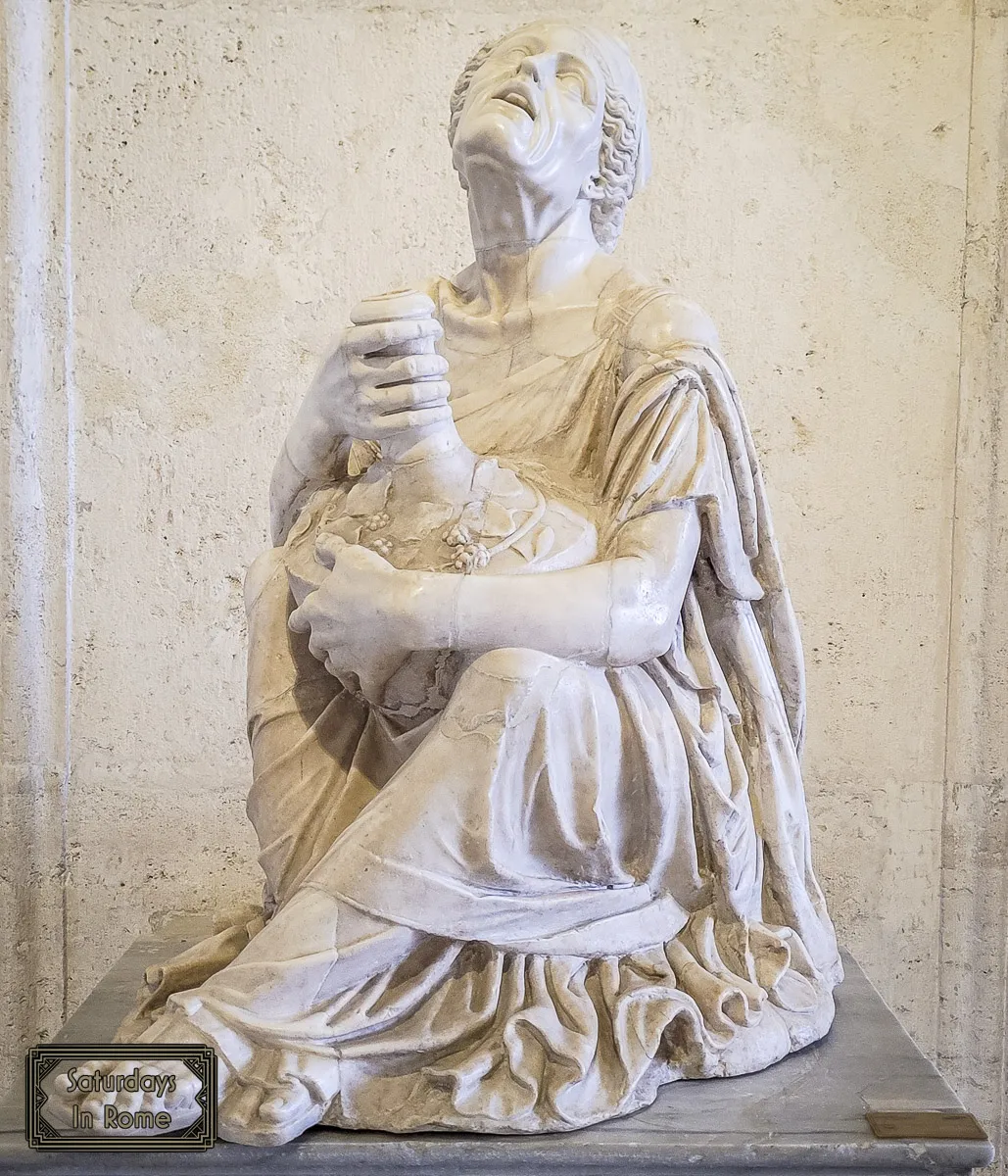
You can use the MIC if you are over 18 years old and a resident of the Rome Metro Area, or if you are a student in a public or private university in the Rome Metro Area. For the Capitoline Museums, the MIC card entitles you to a reduced ticket for the exhibitions hosted in the exhibition spaces and providing for separate ticketing. The online pre-purchase of the reduced entrance ticket is mandatory.
Hours
This is one of the most accessible museums I’ve ever visited. The operating hours are:
- Open Everyday from 9:30am to 7:30pm
- On December 24th (Christmas Eve) and 31st (New Years Eve) from 9:30am to 2:00pm
- The museum is closed on New Year’s Day, May 1st and Christmas Day
Marforio The River God
Last admission is one hour before closing time and you should consider that for reasons of protection of the works of art, the staff will request that bulky bags, backpacks, umbrellas and other potentially harmful objects be left in the cloakroom where lockers are provided. Objects left in the self-service cloakroom must be collected before the museums close.
Virtual Tours
There is a video guide on the permanent exhibits of the museums in Italian, English, French, German, Spanish, Russian available for €7.00. The guides can be purchased directly from the ticket office and are supplied to the visitor already sanitized with a disposable headset. A museum app is available in the IOS and Android stores.
I used this video tour and it was great. You walk around with a tablet around your neck listening and seeing descriptions of the art work you are seeing. The great part for me was that you can choose how long you want your tour to be, and the guide will adjust, skipping over the rooms and pieces that don’t fit into the theme of the tour you chose.
Giardino degli Aranci
This beautiful orange garden on Via di Santa Sabina seems a little out of place in a bustling city like Rome. It is a well maintained space, which is different from some parks, with a path running from the street to the west end of the park which has a walled terrace with an amazing view of the Tiber and the City in all directions. The birds love this park and if you are paying close enough attention, you might actually see the green parakeets, which seem strangely out of place in Rome.
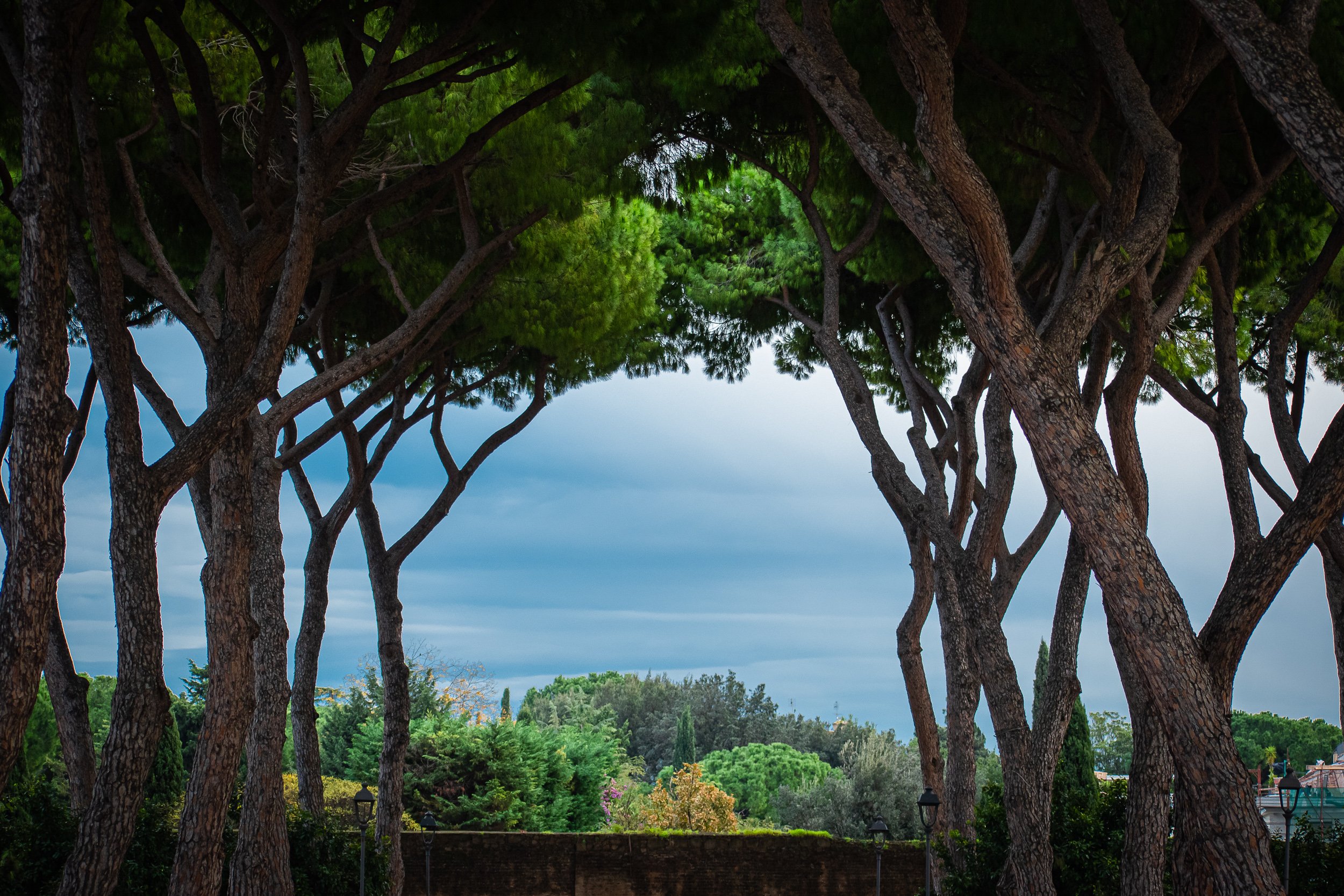
Roman Orange Garden
What Can You See From The Giardino?
As I mentioned above, you can see most of what Rome has to offer. The view from the terrace is expansive. In addition to the River, you can see Saint Peter’s Basilica in Vatican City (more on that later), the Altare della Patria (Altar of the Fatherland) and Trastevere.
The Keyhole
I know that this suggestion really does deserve more of an explanation. When you tell someone that they should climb Aventine Hill so that they can look through a keyhole, they will probably look at you like you have two heads. Trust me, it is definitely worth the trip.
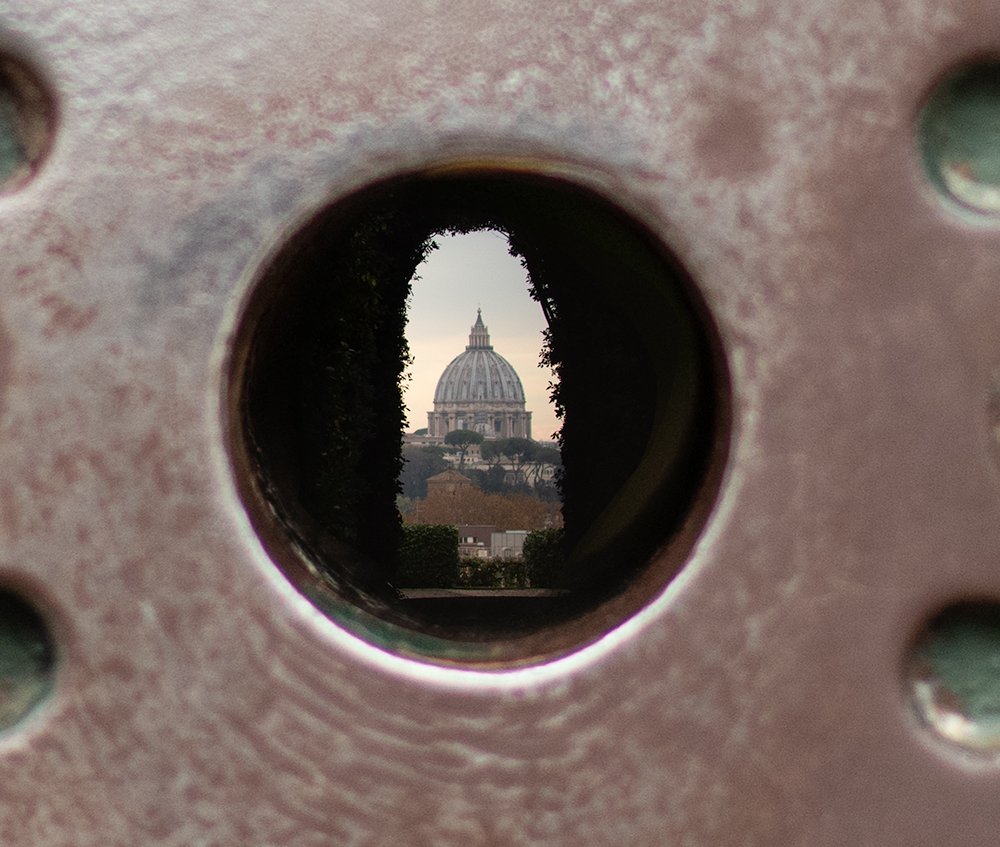
Look, Three Countries at One Time!
Not far from the Giardino degli Aranci in the Piazza dei Cavalieri di Malta is the Villa of the Sovereign Order of Malta. Because this is a sovereign building, it is considered part of Malta, as opposed to being an official part of Italy. This is just like an embassy in another country. The United States Embassy in Rome is considered an American territory and it is guarded by U.S. soldiers.
If you arrive early when others aren’t around, it will take a bit of looking around, but if you arrive a little later and see a big door that people are lined up in front of, that is probably the keyhole. Get in line and see what all the fuss is about. When you approach the door, you will need to look through it at the level of the keyhole for best viewing. When you are there, you will see a dark hole with a light on the other side of it. You are looking at Saint Peter’s Basilica in Vatican City. The keyhole perfectly frames the garden, the surrounding city and the dome. The other interesting part is that at one time you are simultaneously looking at three different countries, Rome, Malta and Vatican City.
The EUR District
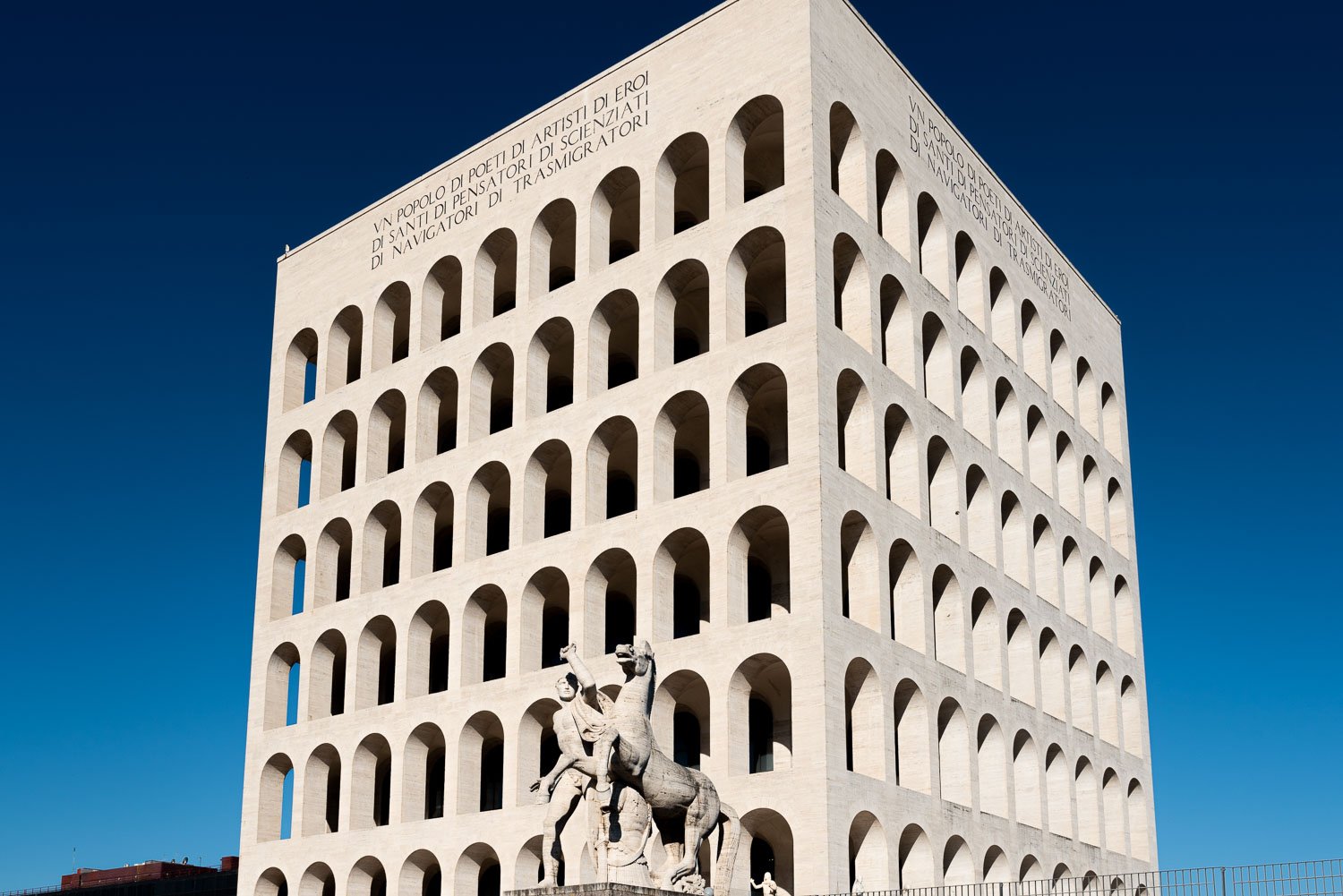
Palazzo della Civiltà Italiana
The Roman neighborhood known as EUR is an urban architectural complex that dates back to the Fascist period in Italy. In the 1930s, Mussolini expressed the desire to start a unique construction project suitable for the headquarters of the World’s Fair, also known as the Universal Exposition, that would take place in 1942. World War II put an end to this plan, but it didn’t prevent this neighborhood from being built and still representing a very active urban area today.
Over the years, the neighborhood has continued to be developed, adding new buildings and urban spaces, becoming a modern and functional area. Here, architectural enthusiasts can see the buildings that date back to the Fascist period built in the same monumental style of the time. The “Palazzo della Civiltà del Lavoro”, with its façade of overlapping arches, and the “Palazzo dei Congressi” are great examples of this.
Who Created The EUR Neighborhood?
The Marconi Obelisk
In 1935 the governor of Rome, Giuseppe Bottai, proposed to Mussolini to nominate the Italian capital to be the site for the future universal exhibition of 1942, which would have made it possible to celebrate the twentieth anniversary of the march on Rome and promote the success of fascism in front of an international audience.
The Mussolini government supported the initiative with the creation of a special autonomous body, the Autonomous Universal Exposition of Rome (l’Ente Autonomo Esposizione Universale di Roma). The area of the Three Fountains (Tre Fontane) was chosen under the belief that it was an ideal connection between Imperial Rome (represented by Caracalla, one of the ancient Roman baths in Rome) and the Tyrrhenian Sea along the Via Imperiale (today via Cristoforo Colombo). The new district was designed to be a further expansion into the area southwest of the city.
The Birth Of EUR
The design of the district was inspired by the ideology of fascism and by classical Roman urban planning, bringing to it the elements of Italian rationalism, which is a varied system with orthogonal axes and grand, imposing, massive and square architectural buildings, mostly built with white marble and travertine to remind visitors of the temples and buildings of imperial Rome.
The symbolic element of this architectural model is the Palazzo della Civiltà Italiana, nicknamed the “Square Colosseum”. However, the universal exhibition never took place due to construction delays, the sudden death of the governor Piero Colonna and the preparations for the Italian participation in the Second World War. The original project was never completed and after being interrupted in 1942, most of the works were destined to remain unfinished, and some were never started.
In 1944, the territory of EUR was occupied by the German Army, who were advancing from the sea towards Rome. It was used as a place of shelter for the troops, the Palazzo della Civiltà Italiana was transformed into a repair shop and the workers’ village was transformed into a barracks.
The Germans had completely emptied the buildings and civilians emptied the workers’ village. After the war, only ruins and undeveloped spaces not connected to the city remain, but it is from here that the development of the EUR started again. Starting from the early 1950s, this represented the post-war reconstruction, which was the basis of the Italian Socio-Economic recovery.
Key Buildings In EUR
EUR is a wide area, but there are two buildings in particular that are visually representative of the style of architecture. They are the Palazzo della Civiltà Italiana and the Palazzo dei Ricevimenti e dei Congressi.
Palazzo dei Congressi
The Palazzo dei Congressi Has Seen Better Days
The Palazzo dei Ricevimenti e dei Congressi, also known as Palazzo dei Congressi, was designed by Adalberto Libera and started in 1938. It was completed in 1954 and then opened to the public. Because of its capacity it was also intended to host fencing competitions at the 1960 Olympic Games in Rome.
Today, the Palazzo dei Congressi is the first choice for numerous events held over the years, including exhibitions, seminars, conferences and political party conventions.
Palazzo della Civiltà Italiana
The most symbolic of the building in EUR is the Palazzo della Civiltà Italiana, also known as the Palazzo della Civiltà del Lavoro and the Square Colosseum. This building was conceived in 1936, designed in 1937, construction began in July 1938 and it was still incomplete when it was inaugurated in 1940.
The building has a square plan with four equal faces which all have 54 arches on each face, with 9 rows and 6 columns. In these arches on the ground floor there are 28 statues, each of them representing the virtues of the Italian people. These are:
| Heroism | Philosophy | Architecture | Printing |
| Music | Commerce | Law | Medicine |
| Craftsmanship | Industry | The Primacy Of Navigation | Geography |
| Political Genius | Archeology | Sculpture | Physics |
| Social Order | Astronomy | Mathematics | The Genius Of Poetry |
| Work | History | The Genius Of Theater | Painting |
| Agriculture | Inventive Genius | Chemistry | Military Genius |
One of the 28 Statues
These statues and virtues were what Mussolini wanted to promote as the ideals of Italy and what the Fascists wanted to represent. With hindsight, some of these seem a bit curious by today’s standards.
The Architecture in EUR is truly something to behold. It is like history frozen in time and it is a must-see if you have the time. As an aside, another reason to visit EUR is to enjoy the EUR Lake (Lago dell’EUR), which is a beautiful urban oasis where you can see the cherry blossom in the spring, rent a paddle boat or just go for a jog.
More Second Time In Rome Suggestions
If you feel like this itinerary for a second time in Rome is for you, here are some more details on the sites mentioned that I believe will be helpful. Also, here is a Rome travel itinerary for your first visit, and another for your third time in Rome.
- Planning A Trip To Rome Is Easy With Our Complete Guide
- We Can Help You Decide Where To Stay In Rome
- The Best Hotels Near The Vatican In Rome, Italy To Consider
- The Italian Hotel Star Rating System Is A Traveler’s Friend
- Hotels Near Piazza Navona Rome That Are A Great Option
- Great 5-Star Hotels Near Pantheon Rome To Check Out
- Amazing Rome Hotels Near Termini Station For Consideration
- Planning A Trip To Rome Alone That Is Safe And Exciting
- Planning A Trip To Rome On A Budget Can Be Done Easily
- Rome, Italy On A Budget Is Possible With These Tips
- 12 Useful Things To Know Before Traveling To Rome, Italy
- 3-Day Rome Itinerary Plans For Your Third Visit To Italy
- A Rome Travel Itinerary For Amazing Vacation Memories
- A Complete Packing List For Men Who Are Coming To Rome
- A Fall And Spring Packing List For Men Coming To Rome
- A Winter Packing List For Men Who Are Coming To Rome
- A Summer Packing List For Men Who Are Coming To Rome
